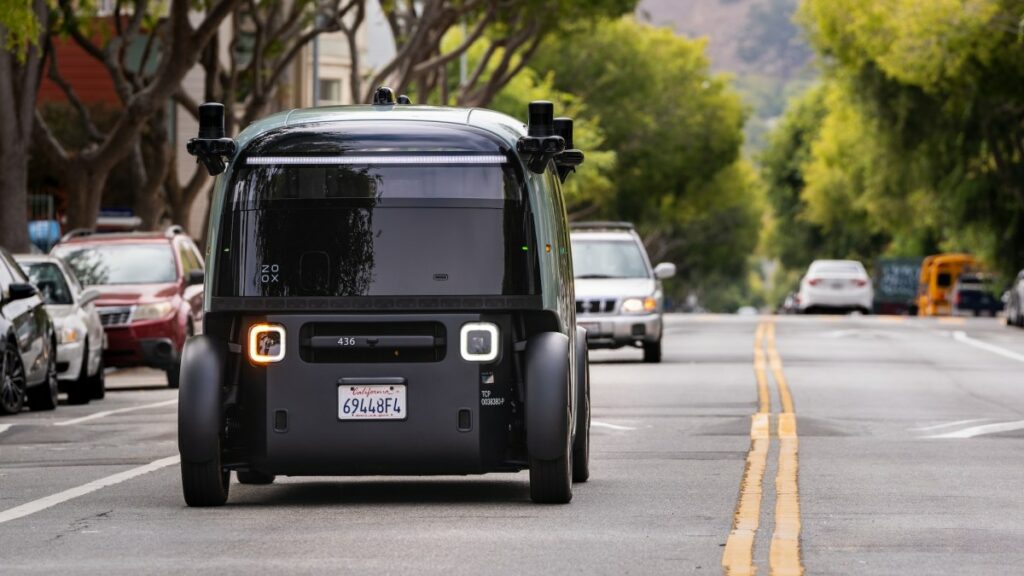Zoox is starting to open its robotaxis to the public in San Francisco as the Amazon-owned company creeps towards a commercial service and direct competition with Waymo.
Zoox robotaxis — custom-built vehicles that lack a steering wheel or pedals — have been rolling around San Francisco streets for nearly a year. But until now, only employees and their friends and family have been able to hail a ride.
This is not a large-scale public launch, nor a commercial one. Instead, the company will invite some of the people who signed up for the waitlist to join its early rider initiative known as Zoox Explorer. Under that program, those select few will get access to the service and, for now, it’s free.
Riders will slowly be moved off the waitlist as Zoox adds more robotaxis to its fleet and its service area grows. Zoox said its goal is to remove the waitlist altogether in 2026. The company wouldn’t disclose the number of riders that will be given public access or how many are on the waitlist. Today, it has about 50 robotaxis in Las Vegas and San Francisco.
Once given access, riders will be able to use the Zoox app to hail a ride within its service area, which covers the SoMA, Mission, and Design districts within San Francisco.

While Zoox’s service area is tiny compared to the 260 square miles that Waymo’s robotaxis operate in, the public launch does get it closer to directly competing with the Alphabet-owned company.
Zoox, which was acquired by Amazon in 2020, has been working towards a commercial robotaxi service for more than a decade. Its test vehicles, Toyota Highlanders outfitted with sensors and self-driving software, were a common sight in the San Francisco Bay Area for years. But its the Foster City, California-based company’s purpose-built robotaxis that have captured the public’s attention.
Techcrunch event
San Francisco
|
October 13-15, 2026
“Zoox has been testing our autonomous technology in San Francisco since 2017,” CEO Aicha Evans said in a statement. “It’s our home. A city of innovation and progress, with an amazing mobility ecosystem that we feel Zoox can really complement. We have seen incredible interest in Zoox in this market and are excited about this first step to bring our purpose-built robotaxi experience to more people.”
Two hurdles stand between Zoox and a commercial robotaxi service. The company must receive a permit from the California Public Utilities Commission, which regulates ride-hailing, to be able to charge for rides in the state.
Zoox also has to convince the National Highway Traffic Safety Administration to let it use the custom-built robotaxis for a commercial service.
The company has made some progress at the federal level. In August, NHTSA gave Zoox an exemption to demonstrate its custom-built robotaxis on public roads. The decision cleared up a long-standing debate over whether Zoox’s custom-built autonomous vehicles complied with federal motor vehicle safety standards, which place requirements on vehicles such as having a steering wheel and pedals.
The exemption has allowed Zoox to give free rides in its robotaxis. It won’t be able to charge for rides until NHTSA expands that exemption to cover commercial operations.


